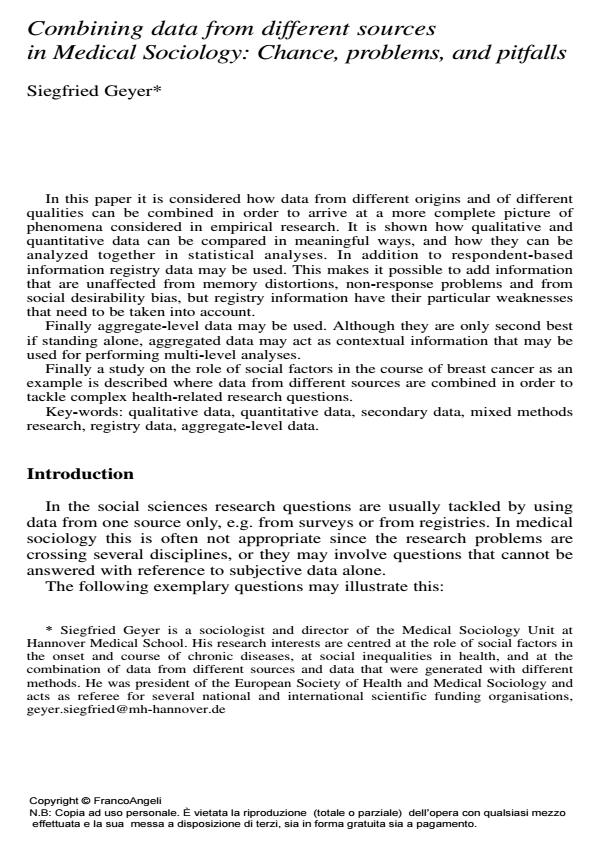Combining data from different sources in Medical Sociology: Chance, problems, and pitfalls
Journal title SALUTE E SOCIETÀ
Author/s Siegfried Geyer
Publishing Year 2010 Issue 2010/suppl. En. 2
Language English Pages 15 P. 80-94 File size 283 KB
DOI 10.3280/SES2010-SU1006
DOI is like a bar code for intellectual property: to have more infomation
click here
Below, you can see the article first page
If you want to buy this article in PDF format, you can do it, following the instructions to buy download credits

FrancoAngeli is member of Publishers International Linking Association, Inc (PILA), a not-for-profit association which run the CrossRef service enabling links to and from online scholarly content.
In this paper it is considered how data from different origins and of different qualities can be combined in order to arrive at a more complete picture of phenomena considered in empirical research. It is shown how qualitative and quantitative data can be compared in meaningful ways, and how they can be analyzed together in statistical analyses. In addition to respondent-based information registry data may be used. This makes it possible to add information that are unaffected from memory distortions, non-response problems and from social desirability bias, but registry information have their particular weaknesses that need to be taken into account. Finally aggregate-level data may be used. Although they are only second best if standing alone, aggregated data may act as contextual information that may be used for performing multi-level analyses. Finally a study on the role of social factors in the course of breast cancer as an example is described where data from different sources are combined in order to tackle complex health-related research questions.
Keywords: Qualitative data, quantitative data, secondary data, mixed methods research, registry data, aggregate-level data.
Siegfried Geyer, Combining data from different sources in Medical Sociology: Chance, problems, and pitfalls in "SALUTE E SOCIETÀ" suppl. En. 2/2010, pp 80-94, DOI: 10.3280/SES2010-SU1006